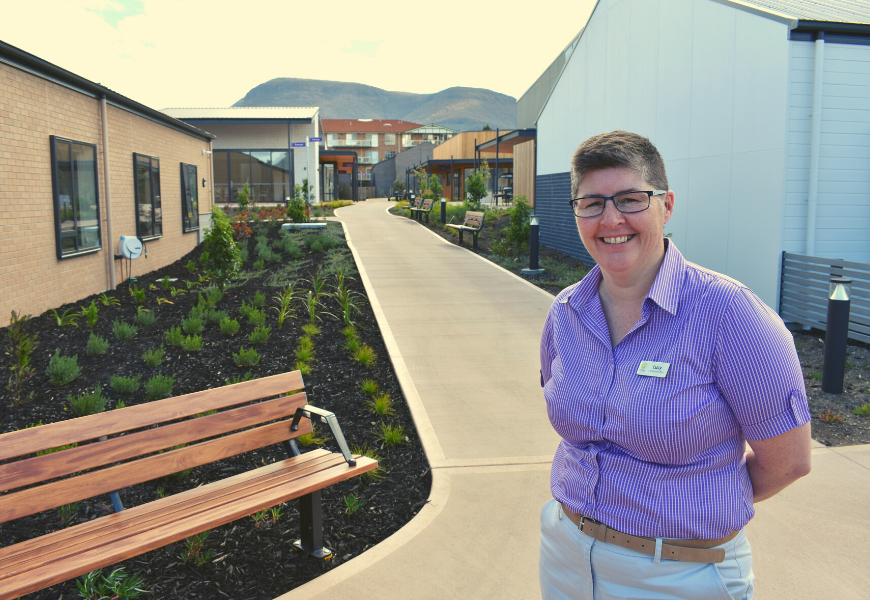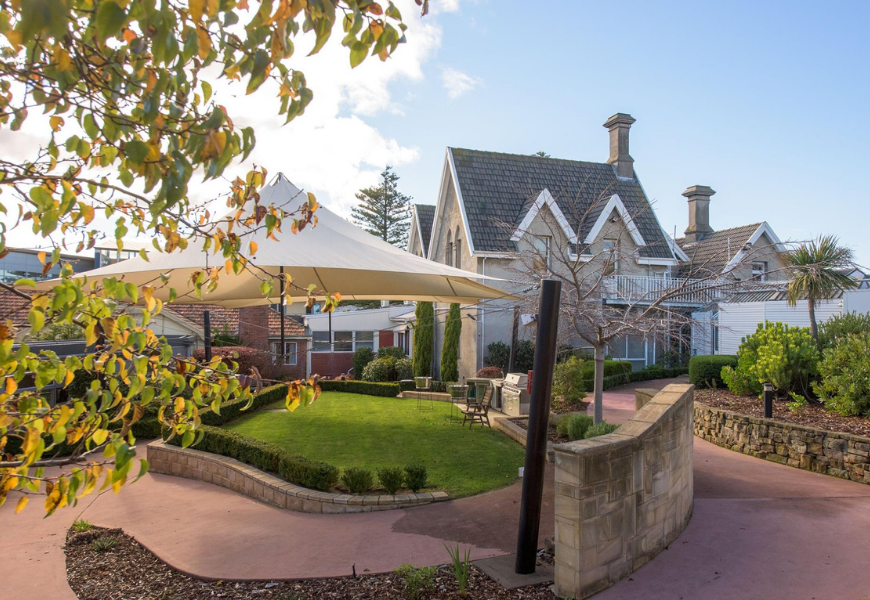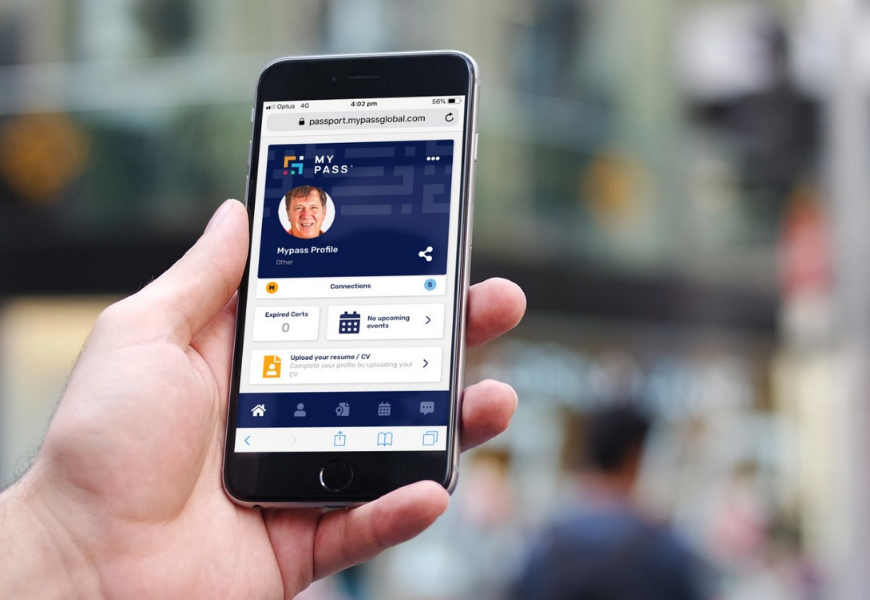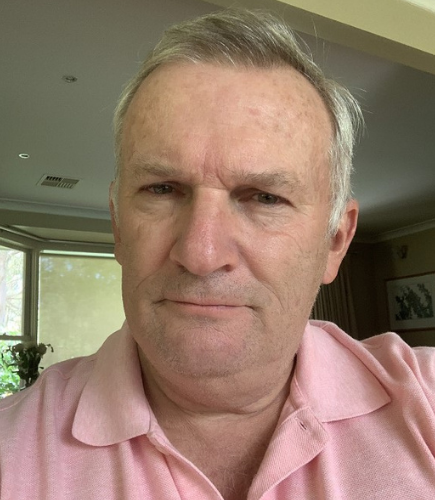Safe and well: connectivity helping older Australians
While staying connected to loved ones and the outside world has been fundamental to the wellbeing of older Australians during the COVID-19 pandemic, connectivity – like services over the nbn™ network – has also been helping to keep them COVID-safe.
A particularly dangerous virus for older Australians who may have compromised respiration or co-morbidities, in Tasmania, aged care facilities have been under no illusion that – when the border opens – someone, somewhere is likely to bring COVID-19 into the state.
Ironically, the easing of border restrictions for Tasmania has meant tougher voluntary restrictions and protocols at aged care facilities.
Keeping older Tasmanians safe
Tasmania’s readiness for the COVID-19 pandemic was acknowledged recently by Australia’s Chief Scientist Dr Alan Finkel AO.
In the National Contact Tracing Review* presented to Australia’s National Cabinet in November, Tasmania’s residential aged care facilities were praised for their coordinated preparation: “Early in the pandemic, the Tasmanian Department of Premier and Cabinet identified the need for close collaboration with residential aged care facilities.”
Among the facilities is Glenview Community Services, one of Tasmania’s largest residential aged care providers.
CEO Lucy O’Flaherty, who is also spokesperson for aged care peak body Aged and Community Services, says keeping older Tasmanians safe during COVID-19 is the industry’s top priority.

This year, Glenview opened Korongee Village, the state’s first dedicated village for those living with dementia .
Getting a fast broadband connection to help support administration and resident services was a must-have, says Lucy.
The facility opened in July at the height of the pandemic and, as an essential health facility, nbn was able to prioritise setting up access to the nbn™ network to help ensure it opened on time.
Based around the idea of a village, every service and facility at Korongee has been designed to be supportive of people living with dementia.
Glenview and COVID-19

To help aid infection control, Korongee put physical restrictions in place and has been using technology to enable residents to remain socially connected.
Like many facilities across the country, to gain entry, visitors must prove they have had a flu shot, declare they are not experiencing any flu-like symptoms and have their temperature tested.
Glenview has also introduced a software tool called MyPass Global to track the health status of its large team, including assessing risks and getting health status reports.
“It was a great early intervention tool for us,” says Lucy.
“It meant that we could get across nearly 300 people very quickly in something that would have taken us days, if not weeks.”

Should there be an outbreak in Tasmania, a complete contact tracing system and health status check can be made available to public health facilities with the press of a button.
To help ensure residents and employees can access the internet wherever they happen to be in the village, Korongee installed Wi-Fi zones across its entire site.
The nurse call system, for example, uses mobile phones connected to the nbn™-powered Wi-FI while, during the initial lockdown, ‘visits’ to residents soared by more than 400 per cent with help from technology including video calls.
“The silver lining that’s come out of COVID is it’s fast-tracked a lot of innovation, it’s enabled us to jump onto digital platforms, and it’s forced us to use electronic mechanisms rather than traditional systems,” says Lucy.
Telehealth and helping in Huon
Among the online innovations helping to keep Australians safe – from young to old – is telehealth.
Based in Ballarat, Victoria, Dr Tony Bongiorno says, for General Practice, telehealth has been one of the key defences preventing the further spread of COVID-19.
“Video conferencing, specifically, has been of huge benefit, which I feel makes the strongest case to remain permanently.
“It is extremely helpful for people who traditionally lack medical services because of their isolation geographically or because of their frailty.”
And Dr Bongiorno can see it benefiting older Australians even more.
“I believe it could be further utilised in Aged Care to also improve communication with doctors and their patients, allowing earlier treatment of illness.”
Research commissioned by nbn last year found there has been a rapid uptake of telehealth in recent times.

The research, undertaken by Venture Insights, found the number of Australians over 65 taking advantage of telehealth had doubled.
Back in Tasmania, at Huon Regional Care in Franklin, Information Communications Technology Service Coordinator Dean Callahan has also been busily upscaling technology.
The facility has connected to services over business nbn™ Enterprise Ethernet, which allows close to gigabit symmetrical speed options for use by its administration team and residents.
The upgraded connections, Dean explains, have allowed residents to use a Wi-Fi zone in their rooms and common areas to stay connected through messaging apps and video calls, as well as watching programs and surfing the web.
Getting the right mix of speed, connection and ease of use for residents and the business has been paramount, says Dean.
It’s a familiar story for aged care facilities right across the state and country, who have been working hard to balance the social and emotional needs of their residents with what’s best for their physical health.
When it comes time for the history books to be written, the widespread use and adoption of technology and the rapid technological innovations achieved during this most challenging of times will surely be among the stand outs.
Future generations will come to know how technology, including connectivity, helped to save millions of lives, and reduce the impact and length of the COVID-19 pandemic.**
Tech tips to help keep older Australians COVID-safe
For aged care visitors
- Stay away from aged care facilities if you have any flu-like symptoms – use technology instead to stay connected.
- Get tested for COVID-19 – rapid tests are now able to return results within 48 hours. While waiting for results, stay isolated.
- Supply your details for contact tracing – fully automated and partially digital systems are now in place to help collect case information and report COVID-19 test results. Tracing apps and Q-reader systems are now a standard part of COVID-safe premises.
For aged care facilities
- Get the best bandwidth available for your facility to support administrative systems and help enable residents to have contact online, reducing the need for physical visits.
- Create Wi-Fi zones across common areas and within rooms so residents can stay entertained and connected.
- Provide 1:1 training on devices and troubleshoot connection issues for residents.
* National Contact Tracing Review, page 40
** nbn is very happy with Glenview, Dr Tony Bongiorno and Huon Regional Care’s experience with the nbn™ broadband access network. Of course, end user experiences may vary. An end user’s experience, including the speeds actually achieved over the nbn™ broadband access network, depends on the nbn™ access network technology and configuration over which services are delivered to their premises, whether they are using the internet during the busy period and some factors outside of nbn’s control (like their equipment quality, software, chosen broadband plans, signal reception, or how their provider designs its network). Speeds may be impacted by network congestion on nbn’s Fixed Wireless network, including during busy periods. Satellite end users may experience latency.
^ Regardless of the retail service you purchase, the actual wholesale speeds delivered by the business nbn™ Enterprise Ethernet product will be no more than 952Mbps due to equipment and network limitations. An end customer’s experience, including the speeds actually achieved over the nbn™ network, depends on some factors outside our control (like their equipment quality, software, and how their retail service provider designs its network). If your service provider has not selected the Class of Service – High, the speeds you experience may be affected by contention on the nbn™ network, particularly in busy periods.



